The Bagpipe Isn’t Scottish and Other Things You Didn’t Know About Scotland
16 Oct 2019
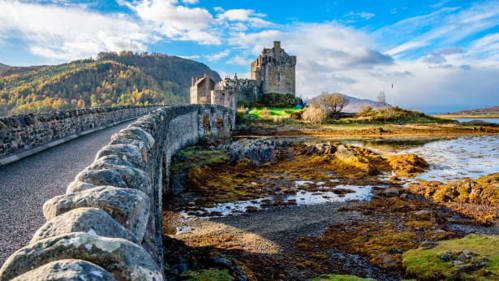
Image by CNN
The iconic Scottish instrument happens to be in the spotlight of controversial debate among historians, many of whom are saying it was from the Middle East, with traces of its origins found in Egypt, Greece and Rome. Shocking! And that’s not the only surprising thing to know about this whimsical wonderland up north. We’ve got the full scoop, and by the end of this list there will be more than one reason to book your next flight to Scotland and experience it for yourself.
Scotland isn’t a country

Image by flagmakers
Wait, what? Yes, you read that right. To be politically correct, Scotland together with England, Wales, and Northern Ireland are nations that make up the country of the “United Kingdom of Great Britain and Northern Ireland”, also known as “UK” in short. Open a map and you’ll see that Scotland is located in the northernmost part of the UK and has been part of this union since the 18th century. Okay, we just needed to get that out of the way. Moving on.
Scotland’s national animal is the unicorn!
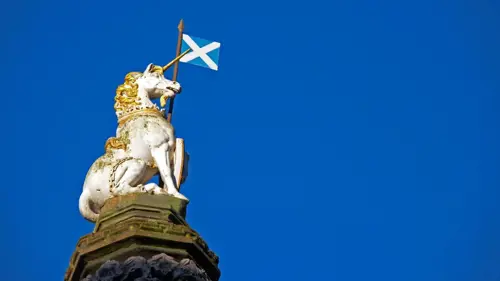
Image by bbctravel
As a nation, Scotland has deep Celtic roots and in Celtic mythology, the unicorn is a symbol of purity, innocence, masculinity, and power. It represents ideals which the Scottish have resonated with for centuries. The unicorn was first proudly worn on the royal coat of arms of William I in the 12th century and its stone form can be seen in many places around Scotland. The most popular unicorn statue can be found at a gatepost of the Palace of Holyroodhouse which is the official residence of Her Majesty The Queen in Scotland, and even on the stained glass windows of St Giles' Cathedral in Edinburgh! This fact is no fairytale.
It is the birthplace of Sherlock Holmes, Peter Pan, and the telephone
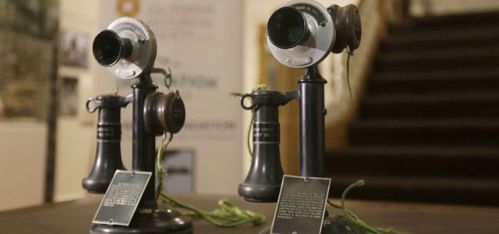
Image by massmoments
Well technically, Edinburgh, Scotland is where the creator of Sherlock Holmes, Sir Arthur Conan Doyle was born. He published his first story at age 27. It was called A Study in Scarlet, featuring our two favourite characters, Sherlock Holmes and his trusty sidekick, Dr Watson. There is even a statue of Sherlock Holmes at Picardy Place Roundabout in Edinburgh! He went on to write many other novels including The Lost World which inspired the TV series, and also did a collaboration piece with his fellow Scotsman, JM Barrie - the creator of Peter Pan. And did you know that the inventor of the first telephone, Alexander Graham Bell was originally from Scotland? He spent a good deal of his life there before moving to Canada and later America where he successfully made his history-making invention in 1876. Hooray for the Scots!
Scotland has up to 790 islands
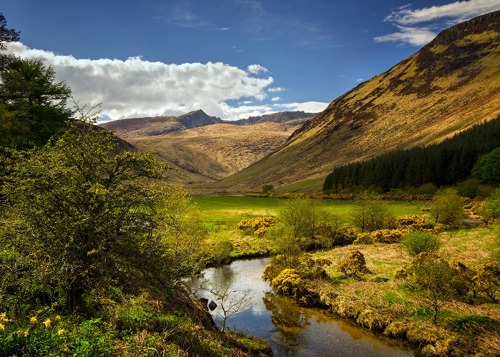
Image by loveexploring
Not a history buff? That’s fine. Scotland has plenty more to offer for the curious traveller - including escapades to at least 94 out of its 790 islands! Where does one even start? If you’re tight for time on your trip, start with the Isle of Arran. It has everything that Scotland’s landscape has to offer on one island - beaches, valleys, mountains, and quaint coastal towns with whisky distilleries! The Isle of Mull promises adventure for those who love nature and the outdoors. You can do pony trekking, cycling, and wildlife watching. Catch a first-hand glimpse of the Atlantic seal, the killer whale and humpback whale, majestic eagles, wild red deer, and even cute little otters. Make sure to include at least one of these amazing islands on your itinerary.
Golf originated in Scotland
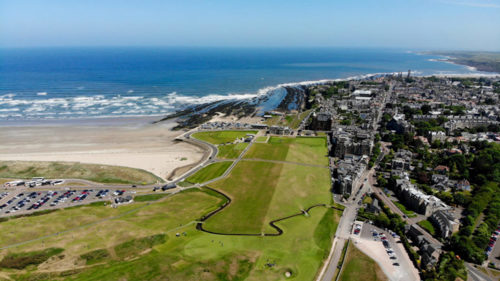
Image by graylynloomis
The modern game of golf as we know it came from Scotland, and if you’ve been wondering why golf seems to be such a prestigious game, it could be due to the fact that it was a favourite game for royalty, namely James II who was the King of Scotland in the 1500s. Many avid golfers consider it a pilgrimage when visiting the Old Course at St Andrews, the oldest golf course in the world. Also, no points for guessing that the world’s first Open Championship was held in Scotland either, at Prestwick Golf Club in 1860. Now that you know this, perhaps you could choose a golf fridge magnet as a souvenir from Scotland instead of the usual bagpipe one.
Scottish men don’t wear kilts everyday
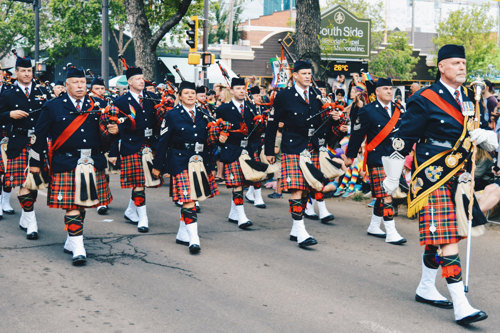
Image by coupleofmen
A list of all things Scottish would be incomplete without a mention of the Scottish kilt. It is a knee-length skirt-like piece of clothing made of woollen cloth with a tartan pattern and pleats at the back, typically worn by men and boys for formal events. That being said, the kilt is so much a part of the Scottish culture that locals probably won’t twice if you walk to the market wearing one. You’ll also find that there are so many types of kilts with different tartan patterns and this is because Scottish clans - which are groups of families or a kinship of people - would be recognised by a unique pattern of their own. Scottish men do not ever refer to the kilt as a “skirt”, and this “non-skirt” is to be taken quite seriously as a good quality one can sometimes cost up to 400 British pounds! Give it a go and wear it like the locals do - at the next wedding or cultural festival you attend. Speaking of festivals…
Scotland is host to the largest arts festivals in the world
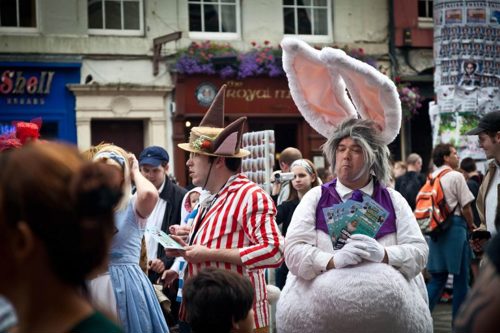
Image by meadowhead
The Edinburgh Fringe Festival usually takes place annually in August. In 2018, it lasted for 25 days, featuring over 55,000 performances of 3,548 different shows in 317 venues!! How does something so elaborate grow to such a size? The answer: there isn’t a selection committee! The festival is open to anyone and any kind of art performance including theatre, children's shows, dance, circus, cabaret, musicals, opera, spoken word, and of course the biggest chunk of it all - comedy. It got its name from literally starting on the fringe of the original Edinburgh International Festival in 1947 when eight theatre companies decided they would unofficially hold their own productions even though uninvited. This movement soon grew to become such a highlight in Edinburgh, and is now attended by people from all over the world. For best prices around this popular period, get your festival and flight tickets early. You don’t want to miss out on this one!
There are over 2000 castles in Scotland
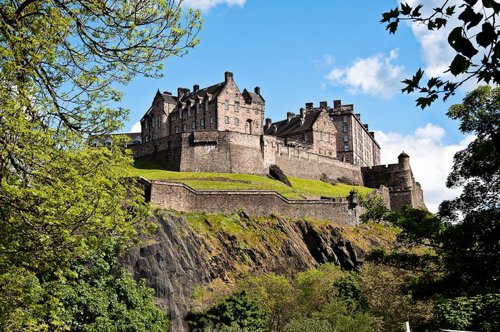
Image by rove.me
In addition to unicorns, Scotland has an abundance of castles to complete its real-life fairytale atmosphere. Magic dust aside, these castles were in fact a result of feudalism in Scotland, a way of structuring society around holding land in exchange for labour and protection during the 12th and 13th century. A must-visit castle is the Edinburgh Castle - a Scottish symbol in itself. Do note it has different opening times in summer and winter, so plan your visit and get entry tickets as low as 10 British pounds if you purchase them online. You have also probably seen a triangular-shaped castle on Pinterest at some point. This unique castle is none other than the Caerlaverock Castle which sits on the northern edge of the Caerlaverock National Nature Reserve. Admission to this castle is cheaper than Edinburgh, although opening times still differ by season. More information available here.
Eeyore’s favourite food is the national emblem of Scotland

Image by wikipedia
Who remembers Eeyore, the melancholic little donkey in the tales of Winnie the Pooh by A. A. Milne? If there’s one thing that a pessimist like him enjoyed, it would be a bunch of thistles to munch on. Don’t try this at home of course! Thistles are a flowering weed plant with extremely prickly stems, widely found all over Scotland. Folklore has it that sleeping Scots warriors were once saved by a bunch of thistles when the Norse army closed in on them, only to cry out in pain as they stepped on the unwelcoming plant. Since 1687, the humble thistle has been given its due credit. Till today, ‘The Most Ancient and Most Noble Order of the Thistle’ is one of the highest honours that can be given to an individual for his contribution to the life of Scotland and the greater United Kingdom.
There’s no such thing as the Loch Ness monster - or is there?

Image by moviefone
A ‘loch’ is the Irish and Scottish Gaelic word for ‘lake’ or sea inlet. The landscape of Scotland naturally produces plenty of lochs, with Loch Ness being the most popular worldwide because of its fabled “monster” sighting that first took place in 565AD. It was later supported by a news article published in The Inverness Courier in the 1930s. A man named Alec Campbell had described a whale-like creature that was said to cause a great deal of "cascading and churning" in the water. This sparked a series of tales and children’s storybooks about ‘Nessie the Loch Ness monster’ as well as movies, documentaries, and more controversies to come. While the BBC reports that it could have just been a giant eel, many remain convinced that the creature exists. So is Nessie real? Well, for that you’d have to jump on a Loch Ness tour to find out for yourself.
Want to pay a visit to Nessie - the Loch Ness Monster - at Loch Ness? Check out www.mayflower.com.my for some of the best flight deals to the United Kingdom and more!
------------------
Sarah Lim

